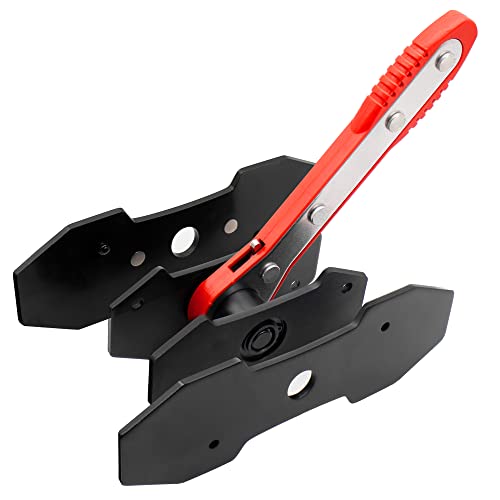What Cars are Front Wheel Drive?: Ultimate Guide
Many popular cars feature front-wheel drive (FWD) systems. Examples include the Honda Civic, Toyota Corolla, and Ford Focus.
Front-wheel drive (FWD) vehicles have become increasingly popular due to their efficient design and better fuel economy. In FWD cars, the engine’s power is directed to the front wheels, enhancing traction and stability, especially in adverse weather conditions. This drivetrain layout often results in a lighter vehicle, improving handling and reducing manufacturing costs.
FWD is commonly found in compact and midsize sedans, hatchbacks, and even some SUVs. As consumers prioritize practicality and affordability, many manufacturers focus on developing new FWD models. This trend reflects the growing demand for vehicles that offer a blend of comfort, performance, and efficiency for everyday driving.
Introduction To Front Wheel Drive
Front Wheel Drive (FWD) means the front wheels power the car. This setup is common in many vehicles. It offers good traction, especially in wet conditions. FWD cars usually weigh less, improving fuel efficiency.
Benefits of Choosing FWD include easier handling and better cornering. FWD cars have more space inside since there is no need for a rear drive shaft. They are often less expensive to build, which lowers the price for buyers. Maintenance is simpler too, as fewer parts mean fewer repairs.
Historical Evolution Of Fwd Cars
The early implementations of Front Wheel Drive (FWD) cars date back to the 1900s. Innovators like Citroën introduced this technology in their vehicles. It allowed for a more efficient design and better handling.
FWD quickly gained popularity in the automotive industry. By the 1960s, many manufacturers began to adopt this system. Cars became lighter and more fuel-efficient thanks to FWD.
In modern vehicles, FWD is now common among compact cars and sedans. It provides excellent traction, especially in wet conditions. Many drivers appreciate the smooth ride and responsive steering that FWD offers.
Today, brands like Honda and Toyota use FWD in many of their models. This trend shows no signs of slowing down.
How Front Wheel Drive Works
Front Wheel Drive (FWD) is a system where the front wheels receive power. This design allows for better traction on slippery roads. FWD vehicles are typically lighter and more fuel-efficient.
The mechanics of FWD involve a transversely mounted engine. This setup saves space and reduces weight. The engine sends power to the front wheels through a transmission.
| Type | Power Distribution | Best For |
|---|---|---|
| FWD | Front Wheels | Fuel Efficiency |
| RWD | Rear Wheels | Performance |
| AWD | All Wheels | Off-Road |
FWD is often easier to handle than RWD. RWD can offer better performance in sports cars. AWD provides power to all wheels for enhanced grip.
Popular Front Wheel Drive Models
Many popular cars use front wheel drive. These models are efficient and easy to handle.
Compact Cars and Hatchbacks:
- Honda Civic – Known for its reliability and fuel efficiency.
- Toyota Corolla – Offers a smooth ride and great features.
- Ford Focus – A fun-to-drive car with good handling.
- Volkswagen Golf – Combines style with practicality.
Sedans and Crossovers:
- Toyota Camry – Comfortable and spacious for families.
- Nissan Altima – Great for long drives with excellent fuel economy.
- Honda CR-V – A popular choice for its roominess and reliability.
- Ford Escape – Offers versatile cargo space and good performance.
Performance And Handling
Front-wheel drive (FWD) cars have unique driving dynamics. They often provide better traction on wet or slippery surfaces. This is due to the weight of the engine over the front tires.
FWD cars generally handle well in everyday driving. They are easier to control in normal conditions. The design also helps with fuel efficiency and space inside the car.
In different weather conditions, FWD performs well. It offers stability in rain and light snow. However, on ice, FWD may struggle without proper tires.
| Weather Condition | FWD Performance |
|---|---|
| Rain | Good traction and stability |
| Light Snow | Acceptable with good tires |
| Ice | May struggle without proper tires |
Economy And Efficiency
Front-wheel drive (FWD) cars offer great fuel savings. They are lighter and more efficient. This design helps in reducing fuel consumption. Many drivers appreciate this benefit.
Maintenance costs for FWD cars are often lower. The simpler design means fewer parts to replace. Less complexity leads to fewer repairs over time. Owners enjoy savings in both time and money.
| Aspect | FWD Benefits |
|---|---|
| Fuel Efficiency | Better fuel economy compared to RWD |
| Maintenance | Lower costs due to fewer parts |
| Handling | Improved traction in wet conditions |
Front Wheel Drive In Racing
Front Wheel Drive (FWD) has a unique role in racing. Many cars use this system for better handling. FWD helps drivers maintain control during sharp turns.
FWD in Motorsport is popular in events like rallying and touring car races. These competitions value quick acceleration and stability. FWD cars are often lighter and easier to manage.
| Modifications for Competitive FWD | Description |
|---|---|
| Upgraded Suspension | Improves handling and cornering performance. |
| Performance Tires | Enhances grip on various surfaces. |
| Engine Tuning | Increases power and responsiveness. |
| Weight Reduction | Makes the car faster and more agile. |
Choosing The Right Drive For You
Choosing a car can be hard. Front-wheel drive (FWD) cars are popular. They handle well on roads. FWD is great for rain and light snow. Many people find FWD easier to drive.
FWD cars have the engine over the front wheels. This helps with traction. They often cost less to make. Maintenance can also be cheaper.
All-wheel drive (AWD) cars are different. They send power to all four wheels. This helps in tough weather. AWD can offer better control.
Rear-wheel drive (RWD) cars have power at the back. They are fun to drive but can slide easily. RWD is often used in sports cars.
| Drivetrain Type | Advantages | Disadvantages |
|---|---|---|
| FWD | Good traction, cheaper to maintain | Poor performance in heavy snow |
| AWD | Better control in bad weather | More expensive, heavier |
| RWD | Fun to drive, better handling | Poor traction in snow |
Future Of Front Wheel Drive
Front Wheel Drive (FWD) technology is evolving rapidly. Technological advancements are changing how cars perform. New systems improve fuel efficiency and handling. Electric and hybrid models are popular in FWD designs.
Trends in FWD design focus on lightweight materials. These materials help in reducing weight and improving speed. Aerodynamics also play a key role in modern FWD vehicles. This helps to enhance performance and save fuel.
| Trend | Description |
|---|---|
| Lightweight Materials | Use of aluminum and composites for better efficiency. |
| Electric Powertrains | Integration of electric motors for better performance. |
| Aerodynamic Designs | Shapes that reduce drag and improve fuel economy. |
Frequently Asked Questions
What Are The Benefits Of Front-wheel Drive Cars?
Front-wheel drive cars offer better traction in slippery conditions. They are usually more fuel-efficient due to lighter weight. Additionally, the design allows for more interior space. This drivetrain layout also results in simpler construction and lower manufacturing costs, making them affordable options.
Which Brands Make Front-wheel Drive Vehicles?
Many popular brands manufacture front-wheel drive vehicles. Honda, Toyota, and Ford are notable examples. Other brands like Volkswagen, Nissan, and Chevrolet also offer various models with this drivetrain. These vehicles cater to a wide range of consumers, ensuring versatility and availability.
How Does Front-wheel Drive Differ From Rear-wheel Drive?
Front-wheel drive powers the front wheels, enhancing traction and stability. In contrast, rear-wheel drive sends power to the back wheels, offering better handling in performance situations. Front-wheel drive is generally more efficient for everyday driving, while rear-wheel drive excels in sportier applications.
Are Front-wheel Drive Cars Good In Winter?
Yes, front-wheel drive cars perform well in winter conditions. Their weight distribution helps maintain traction on slippery surfaces. The front wheels pull the vehicle, making it easier to navigate through snow. However, proper winter tires are essential for optimal performance and safety.
Conclusion
Front-wheel drive cars offer excellent traction and fuel efficiency. They are ideal for various driving conditions. Many popular models, from sedans to SUVs, utilize this design. Understanding which cars are front-wheel drive can help you make informed choices. Consider your needs and preferences when selecting your next vehicle for a smooth ride.






